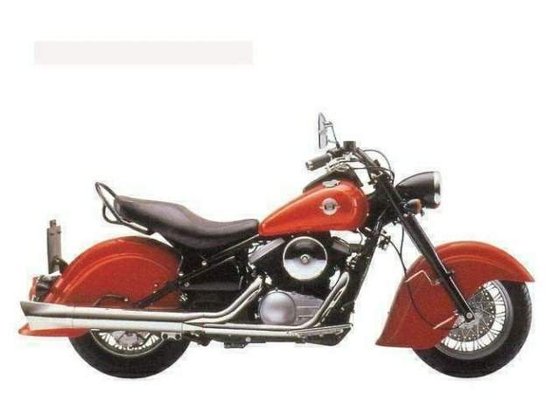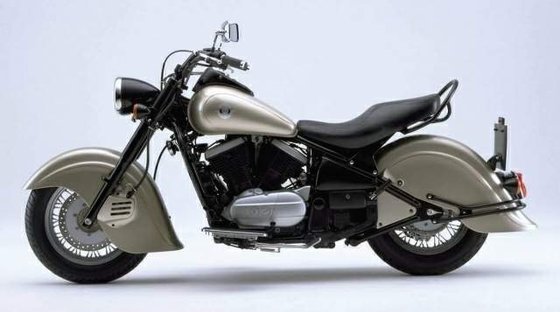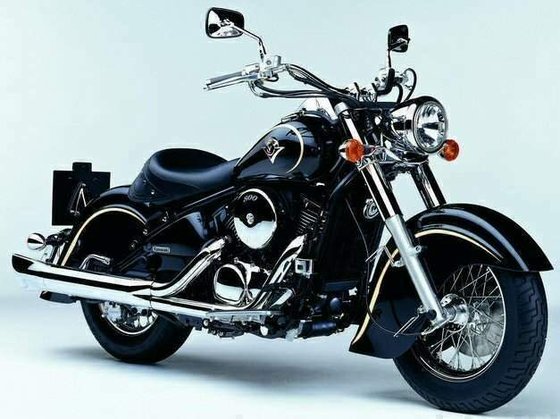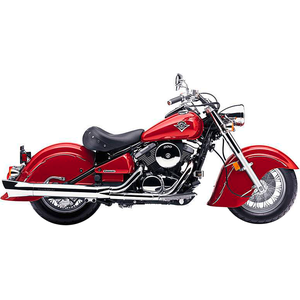Kawasaki VN 800 Vulcan Drifter [1999–2006]: A Retro Cruiser with Modern Soul

Introduction
The Kawasaki Vulcan 800 Drifter isn’t just a motorcycle—it’s a time machine. From the moment you lay eyes on its sweeping fenders and chrome-accented silhouette, you’re transported to the 1940s, an era when motorcycles were as much about art as they were about function. Yet, twist the throttle, and the Drifter reveals its modern heart: a liquid-cooled V-twin engine, responsive suspension, and brakes that wouldn’t feel out of place on a contemporary sport bike. Produced from 1999 to 2006, the Drifter carved a niche as a cruiser that blends nostalgia with reliability. Let’s dive into what makes this bike a standout, even decades after its debut.
Design: A Nod to the Golden Age of Motorcycles

Kawasaki’s designers didn’t just borrow retro styling cues—they resurrected them. The Drifter’s exaggerated fenders, inspired by the 1940s Indian Chief, dominate its profile. These aren’t mere cosmetic additions; they’re crafted from rigid plastic to withstand road debris while maintaining that classic “full-dress” look. The fishtail muffler, a throwback to pre-war aesthetics, adds a touch of authenticity, though its throaty rumble is unmistakably modern.
The genius lies in the hidden details. The rear suspension uses Kawasaki’s Uni-Trak system, cleverly tucked under the swingarm to mimic a hardtail frame. Chrome accents—on the bullet-shaped headlight, engine covers, and fender rails—contrast beautifully with the blacked-out fork tubes and cylinders. Even the seat, a low-slung 760 mm (29.9 inches), echoes the sprung saddles of yesteryear while offering modern ergonomics.
Color options evolved over the years, from Candy Cardinal Red to understated Ebony/Silver. My test bike, finished in metallic beige, drew stares at every stoplight, proving that the Drifter’s design remains timeless.
Performance: Smooth Power, Vintage Vibes

At the core of the Drifter is an 805cc V-twin engine, producing 56 hp and 64 Nm (47.2 lb-ft) of torque. Numbers don’t tell the whole story. The real magic is in the delivery: torque peaks at just 3,300 rpm, making acceleration feel effortless. The single-pin crankshaft delivers a throaty pulse, while a gear-driven balancer keeps vibrations in check—no numb hands here.
The 5-speed transmission is a highlight. Shifts are crisp, aided by a heel-toe shifter that encourages lazy footwork. Kawasaki’s “Positive Neutral Finder” is a godsend in traffic: tap the gear lever up from first, and you’re guaranteed neutral every time.
Handling? Surprisingly agile for a cruiser. The 41mm telescopic fork and Uni-Trak rear suspension soak up bumps, though the real limitation is ground clearance. Those gorgeous floorboards scrape early in corners, a friendly reminder to take it easy. Braking is confident, with dual 300mm front discs (post-2002 models) and a rear drum (later upgraded to a disc). It’s no canyon carver, but for boulevard cruising, it’s sublime.
Comfort: Built for Leisurely Miles

The Drifter’s ergonomics prioritize relaxation. The wide, pullback handlebar places your arms in a natural V-shape, while floorboards let you stretch your legs. At 5’7”, I felt instantly at home, but taller riders (6’+) might find the seat cramped on long rides. The passenger perch is modest, though the chrome grab rail adds security.
The seat itself is a mixed bag. Plush at first, it firms up after an hour, urging you to take a coffee break. Still, the riding position—upright and slightly reclined—minimizes fatigue. Wind protection is nonexistent, but that’s part of the charm. You’re not just riding a motorcycle; you’re part of the scenery.
Competition: How Does the Drifter Stack Up?
The middleweight cruiser segment in the 2000s was crowded. Here’s how the Drifter fared against its rivals:
- Honda Shadow 750: The Shadow’s shaft drive and fuel injection (in later models) made it low-maintenance, but its styling lacked the Drifter’s drama.
- Yamaha V-Star 650: Lighter and cheaper, the V-Star appealed to new riders but couldn’t match the Drifter’s torque or retro flair.
- Suzuki Boulevard C50: A competent cruiser with modern amenities, though its “cookie-cutter” design blended into the crowd.
The Drifter’s ace was its uniqueness. While competitors played it safe, Kawasaki embraced bold, nostalgic styling without sacrificing reliability. The chain drive (a con for some) allowed for a slimmer rear end, enhancing the vintage hardtail illusion.
Maintenance: Keeping the Drifter Road-Ready
Ownership is straightforward if you stay proactive:
- Chain Care: The chain drive requires regular cleaning and lubrication. Upgrade to a high-quality aftermarket chain for longevity.
- Valve Adjustments: Check valve clearances every 12,000 km (7,500 miles). Specs: 0.10–0.15 mm (intake) and 0.20–0.25 mm (exhaust).
- Oil Changes: Use SAE 10W-40 oil. Capacity is 3.2 liters (3.4 quarts) with a filter.
- Cooling System: Monitor coolant levels and flush every 2 years. The liquid-cooled engine runs hot in traffic, so ensure the radiator fan kicks in.
Pro Tip: Swap the stock seat for a solo saddle or add a gel pad for long rides. MOTOPARTS.store offers bolt-on solutions to enhance comfort without compromising the vintage look.
Conclusion: Timeless Appeal for the Discerning Rider
The Kawasaki Vulcan 800 Drifter isn’t for everyone—and that’s its strength. It’s a motorcycle for those who value style as much as substance, who crave the silhouette of a 1940s icon but demand 21st-century reliability. Yes, the seat could be softer, and the floorboards limit cornering, but these quirks add character.
Today, the Drifter remains a testament to Kawasaki’s willingness to take risks. It’s a rolling piece of art, equally at home in a museum or on a coastal highway. And with a robust aftermarket community, keeping one on the road (or personalizing it) has never been easier.
Whether you’re restoring a classic or upgrading your daily rider, MOTOPARTS.store has the parts to keep your Drifter looking—and running—like a masterpiece.
Ride safe, and let the road carry you where the past meets the present.



















